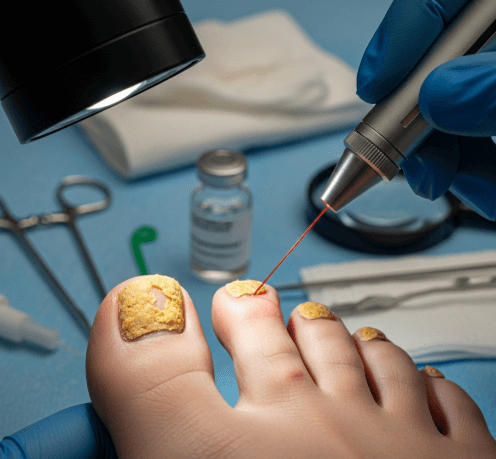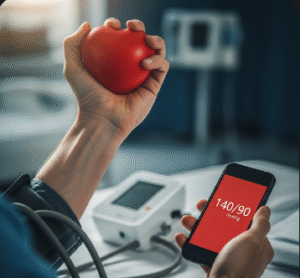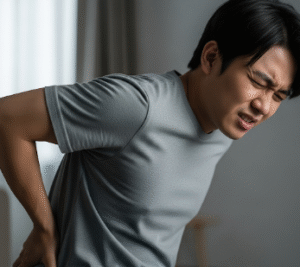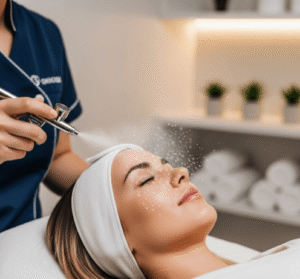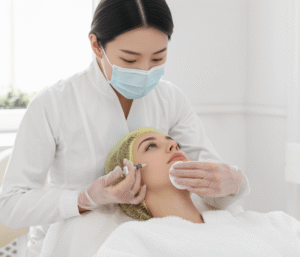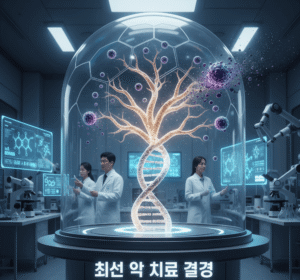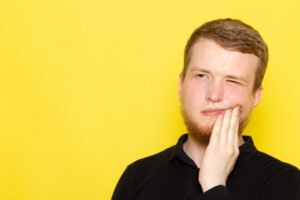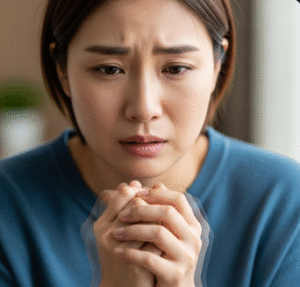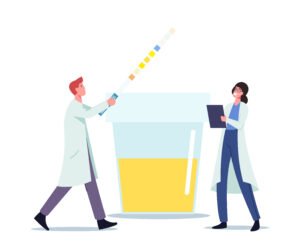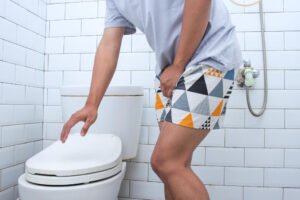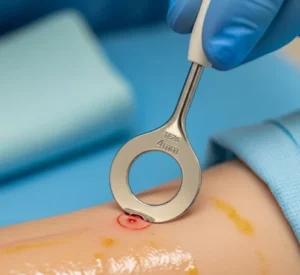➤ What it is
Onychomycosis is a fungal infection of the nails, most commonly affecting toenails but sometimes fingernails. It is caused by dermatophytes (Trichophyton rubrum being the most common), yeasts, or non-dermatophyte molds.
The condition presents as:
- Thickened, brittle nails.
- Discoloration (yellow, white, or brown).
- Debris under the nail plate.
- Nail distortion or detachment from the nail bed in advanced cases.
Onychomycosis is chronic, contagious, and often recurrent. Because nails grow slowly, treatment requires patience and adherence.
In Korea, therapy for onychomycosis combines modern antifungal treatments, advanced laser therapy, and cosmetic nail care. This dual focus ensures not only fungal clearance but also aesthetic nail restoration, important in Korea’s skin- and beauty-conscious culture.
➤ Why it’s done
Treating onychomycosis is important for both medical health and cosmetic reasons:
- Preventing Spread → Onychomycosis can spread to other nails, skin (tinea pedis), or even other people.
- Restoring Nail Function → Thickened nails can cause pain, difficulty walking, or shoe discomfort.
- Improving Appearance → Discolored, deformed nails can be socially embarrassing.
- Preventing Complications → In diabetic or immunocompromised patients, untreated onychomycosis increases the risk of cellulitis and other infections.
- Cosmetic Norms in Korea → Neat, clean nails are an important part of personal grooming, making therapy especially valued.
➤ Alternatives
There are several alternatives for onychomycosis therapy, depending on severity and patient needs:
Topical Treatments (Mild to Moderate Cases)
- Antifungal nail lacquers (ciclopirox, amorolfine).
- Topical creams/gels applied around the nail.
- Require long-term use (6–12 months).
Oral Treatments (Moderate to Severe or Multiple Nails Involved)
- Terbinafine → most effective systemic antifungal.
- Itraconazole or fluconazole → alternatives for resistant cases.
- Courses last several weeks to months.
Laser and Device-Based Therapies
- Nd:YAG laser → penetrates the nail to destroy fungal elements.
- Fractional CO₂ lasers → sometimes used in Korea for nail rejuvenation alongside antifungal treatment.
- Considered a popular adjunct therapy in Korean clinics because they improve cosmetic appearance quickly.
Surgical and Procedural Alternatives
- Nail debridement → mechanical removal of thickened nail tissue.
- Surgical nail removal (rarely used, only in resistant or painful cases).
Lifestyle and Preventive Alternatives
- Keeping nails trimmed and dry.
- Wearing breathable footwear.
- Regular antifungal foot powders.
- In Korea, medicated foot spa therapies are common supportive options.
➤ Preparation
Preparation before therapy ensures the highest success rate:
- Diagnostic Confirmation
- KOH microscopy of nail scrapings.
- Fungal cultures or PCR to identify the organism.
- Important to distinguish from nail psoriasis or trauma.
- Nail Conditioning
- Cutting and thinning nails before therapy improves penetration.
- Avoid nail polish or artificial nails before testing and treatment.
- Lifestyle Adjustments
- Wash and thoroughly dry feet daily.
- Disinfect shoes, socks, and nail tools.
- In Korea, many clinics start patients with pre-treatment nail debridement and cleansing spa care.
➤ How it’s Done
Onychomycosis therapy in Korea is usually carried out in a stepwise, integrated way:
1. Topical Therapy
- Antifungal lacquers painted on nails daily or weekly.
- Topical creams applied around the nail folds.
- Often combined with device-based treatments for better results.
2. Oral Therapy
- Oral antifungal medication prescribed for 6–12 weeks (fingernails) or 12–16 weeks (toenails).
- Blood monitoring sometimes performed to ensure liver safety.
3. Laser Therapy
- Nd:YAG lasers commonly used in Korean clinics.
- Sessions last 15–30 minutes, repeated every few weeks.
- Helps penetrate the nail plate, accelerating clearance.
4. Nail Debridement & Cosmetic Care
- Thickened nails are trimmed, filed, and smoothed by dermatologists.
- Korean clinics often pair this with hydration masks or nail-strengthening serums.
5. Integrated Korean Spa Therapies
- Antifungal soaks using herbal or medicated solutions.
- LED light therapy to reduce fungal activity and stimulate nail regrowth.
- Aesthetic nail programs that restore shine and smoothness.
➤ Recovery
Recovery from onychomycosis is gradual due to slow nail growth:
- Short-term Improvements
- Itching, odor, and scaling around nails improve within weeks.
- The treated nail base starts to appear clearer.
- Long-term Recovery
- Full clearance requires new nail growth, which takes 6–12 months for toenails and 3–6 months for fingernails.
- Maintenance therapy may be required to prevent relapse.
Aftercare Instructions:
- Trim nails regularly and keep them clean.
- Use antifungal powders or sprays in shoes.
- Wear moisture-wicking socks.
- Disinfect clippers and avoid sharing nail tools.
Korean Recovery Practices:
- Post-treatment, many clinics offer nail tone-correcting treatments for discolored nails.
- Patients receive customized skincare and nail regimens using Korean cosmeceuticals designed for sensitive skin and nail health.
➤ Complications
Without proper treatment, onychomycosis may lead to:
- Permanent nail deformity.
- Spread to skin (tinea pedis, tinea cruris).
- Secondary bacterial infections, especially in diabetic or immunocompromised patients.
- Pain and walking difficulties from thickened nails.
- Cosmetic stigma from visibly damaged nails.
With Korean dermatology’s integrated approach, risks are minimized, and aesthetic restoration is prioritized.
➤ Treatment Options in Korea
Korea is one of the most advanced countries for onychomycosis therapy, thanks to its integration of medical dermatology and aesthetic nail care.
Why Korea excels:
- Advanced lasers (Nd:YAG, fractional CO₂) widely available.
- Holistic programs → antifungal therapy + cosmetic nail restoration.
- Patient-centered focus → strong emphasis on preventing recurrence.
- Medical tourism → many international patients seek nail therapy in Korean clinics.
Unique Korean Practices:
- Laser + antifungal combination therapy for faster, more effective results.
- Nail spa programs → include herbal soaks, LED therapy, and nail strengthening serums.
- Cosmetic nail restoration → Korean clinics often improve not just health but also nail beauty.
- Customized regimens → dermatologist-guided use of antifungal-friendly nail products and foot care routines.
✨ Final Thoughts
Onychomycosis Therapy in Korea is not limited to medical antifungal treatment. It is a comprehensive, integrated approach combining oral and topical antifungals, laser therapies, nail debridement, and cosmetic nail restoration.
With its cutting-edge technology, strong preventive culture, and aesthetic-driven dermatology, Korea ensures patients achieve not only fungal clearance but also healthy, natural-looking nails.
This blend of medical effectiveness and cosmetic excellence makes Korea a global leader in managing nail fungal infections.

